Modular, Tailor-made Cooling Systems can Guarantee Zero Leakage on Robotic Welding Systems Due to Welding Tip Loss
11th March 2010
Source:
Burkert Fluid Control Systems
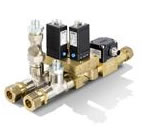
By using configurable, modular control systems with operator-specific software, users of spot welding robot systems can acquire intelligent tailor-made cooling systems that guarantee zero leakage in their production environment as a result of loss or replacement of electrode tips. Such modular systems, consisting of compact devices with integrated sensor equipment, valves and controllers, can be individually configured to provide optimised cooling solutions for specific applications and operator requirements. Moreover, in contrast to conventional solutions consisting of products from various manufacturers, integrated solutions are much more compact in size and their components are specially chosen for optimised interoperability.
Cooling systems for electrode caps typically consist of a flow controller, a feed and return valve and generally some pneumatic – or electro-pneumatic- control valves. One of the main disadvantages of this type of system is its large size: dimensions of 1000 x 600 mm being fairly common. In plants where several robots are operated in close proximity to each other, the space requirements for such systems can pose a problem.
Another disadvantage of these systems lies in their measuring equipment. The flow controllers that are normally used are inexpensive, but their switching point is not sufficiently accurate. This particularly limits the flexibility of the system; due to the large hysteresis of the flow controllers, meaning response time in the event of a leak is rather long. In addition, these controllers are unable to respond adequately to small flow rate deviations of less than one litre per minute or small leaks (caused for example by hairline cracks in the feed or return line), as they often fail to switch together or switch too slowly to close the cooling water circuit within the necessary time limit.
The combination of sensor equipment, valve technology and controllers in small compact units provides a flexible and reliable solution for all of the above problems. Such high-performance integrated systems can be assembled according to the requirements of the operator and the specific application from pre-designed modules.
This approach allows for the production of tailor-made intelligent systems for the cooling of electrode caps that guarantee zero leakage in the event of a loss of an electrode cap or during replacement.
Modular cooling systems with pneumatic control elements
The integrated cooling water monitoring block consists of a pilot valve, a feed and return valve and a flow rate sensor (see fig. 1). The main advantages of the block solution are its compact size and the option to provide additional connections for secondary cooling processes such as, for example, a thyristor cooling system.
During operation, the pilot valve is switched in such a way that both the feed and return valves are opened. The cooling water can thus flow freely through the electrode clamps. As soon as a leak occurs, the flow rate sensor actuates the pilot valve. As a consequence, the feed valve is switched to close the cooling water circuit. The return valve closes with a delay that is preset by means of a restrictor. This delayed shut-off ensures that the pressure in the electrode clamps is reduced through the return valve. The backpressure occurring in the return lines continues pressurising the lines of the electrode clamps. This pressure can reach up to 2- bar, meaning that some small leakage can still occur while the electrode caps are being replaced.
No leakage with relief cylinder
To further reduce this leakage, the modular cooling system can be equipped with a relief cylinder in the form of a MasterJet unit from Bürkert (see fig. 2). This cylinder is pneumatically preloaded during operation and relieved in the event of a leak or during cap replacement. The pressure inside the electrode clamps of maximum 2- bar is thus relieved into the cylinder, as such, sucking the water into it’s internal volume. This ensures that no water can escape the system while the caps are being replaced, irrespective of the actual pressure in the electrode clamps. The MasterJet offers another significant advantage: when the cooling system is restarted, water is fed back from the cylinder into the pipeline, effectively preventing air bubbles in the lines. There is thus no need for additional bleeding measures and the system can be restarted without erroneous sensor signals. Restarting therefore takes only two to three seconds. Without the MasterJet, the restart time would be around 15 to 20 seconds. Taking into account all these advantages, the relief cylinder pays for itself within a very short period of time. In addition, MasterJet solutions are very compact in design so that the monitoring block can be installed directly at the base of the welding robot close to the actual process.
Modular cooling systems with electrical control elements
The design and function of integrated cooling blocks with electrically operated solenoid valves are essentially similar to those of the pneumatically operated systems (see fig. 3). They also provide additional connection ports for the cooling of thyristors. The use of electrically operated cooling systems is particularly recommended for plants where the electrode clamps are equipped with electric servo motors, as the cooling blocks do not require compressed air supply lines. On request, electrically operated cooling systems can be fitted with an auxiliary pump. In the event of a leak or during the replacement of the electrode caps, the pump removes the trapped coolant to the return line, thus preventing cooling water escaping during electrode cap replacement.
Customised sensor equipment and valve technology
The choice of the optimum sensor and valve technology for cooling systems for spot welding robots is determined by a number of different factors. One of the most important issues is the quality of the cooling water. It is often contaminated and contains iron (Fe) and oxygen (O2) magnetite resulting from chemical reactions. To overcome this problem, Burkert recommends using direct-acting valves, such as seat valves or diaphragm valves, rather than electrically- driven solenoid valves, as particles in the cooling water can block the pilot channel that is crucial for the proper functioning of the valves.
Diaphragm valves also have the advantage of very low flow rate losses and pressure drops in the valve. If the required flow rate can only be achieved with servo-assisted solenoid valves, Burkert recommends using media-separated valves (see example in fig. 3) where the cooling water containing magnetite is not in direct contact with the magnetic coil.
Key factors for the choice of the correct sensors are the number of adjustable electric switching points (one or two), the design of the outputs (analogue or frequency) and the response time in the event of a leak (normally between 300 and 500 milliseconds). In addition, operators must consider whether the sensor equipment can be properly integrated into the system. The integration of paddle wheel sensors is, for example, much easier than that of ultrasonic sensors, as paddle wheel sensors tend to be smaller in size. When choosing between these two sensor types, the level of contamination of the cooling water must also be considered. As an alternative to systems with summary coolant return flow monitoring of both electrode caps, operators can opt for solutions where the cooling water flow of each electrode cap is monitored separately. Such solutions offer the benefit of allowing operators to easily determine the level of contamination in the cooling lines, helping to avoid problems before they arise.
Another disadvantage of these systems lies in their measuring equipment. The flow controllers that are normally used are inexpensive, but their switching point is not sufficiently accurate. This particularly limits the flexibility of the system; due to the large hysteresis of the flow controllers, meaning response time in the event of a leak is rather long. In addition, these controllers are unable to respond adequately to small flow rate deviations of less than one litre per minute or small leaks (caused for example by hairline cracks in the feed or return line), as they often fail to switch together or switch too slowly to close the cooling water circuit within the necessary time limit.
The combination of sensor equipment, valve technology and controllers in small compact units provides a flexible and reliable solution for all of the above problems. Such high-performance integrated systems can be assembled according to the requirements of the operator and the specific application from pre-designed modules.
This approach allows for the production of tailor-made intelligent systems for the cooling of electrode caps that guarantee zero leakage in the event of a loss of an electrode cap or during replacement.
Modular cooling systems with pneumatic control elements
The integrated cooling water monitoring block consists of a pilot valve, a feed and return valve and a flow rate sensor (see fig. 1). The main advantages of the block solution are its compact size and the option to provide additional connections for secondary cooling processes such as, for example, a thyristor cooling system.
During operation, the pilot valve is switched in such a way that both the feed and return valves are opened. The cooling water can thus flow freely through the electrode clamps. As soon as a leak occurs, the flow rate sensor actuates the pilot valve. As a consequence, the feed valve is switched to close the cooling water circuit. The return valve closes with a delay that is preset by means of a restrictor. This delayed shut-off ensures that the pressure in the electrode clamps is reduced through the return valve. The backpressure occurring in the return lines continues pressurising the lines of the electrode clamps. This pressure can reach up to 2- bar, meaning that some small leakage can still occur while the electrode caps are being replaced.
No leakage with relief cylinder
To further reduce this leakage, the modular cooling system can be equipped with a relief cylinder in the form of a MasterJet unit from Bürkert (see fig. 2). This cylinder is pneumatically preloaded during operation and relieved in the event of a leak or during cap replacement. The pressure inside the electrode clamps of maximum 2- bar is thus relieved into the cylinder, as such, sucking the water into it’s internal volume. This ensures that no water can escape the system while the caps are being replaced, irrespective of the actual pressure in the electrode clamps. The MasterJet offers another significant advantage: when the cooling system is restarted, water is fed back from the cylinder into the pipeline, effectively preventing air bubbles in the lines. There is thus no need for additional bleeding measures and the system can be restarted without erroneous sensor signals. Restarting therefore takes only two to three seconds. Without the MasterJet, the restart time would be around 15 to 20 seconds. Taking into account all these advantages, the relief cylinder pays for itself within a very short period of time. In addition, MasterJet solutions are very compact in design so that the monitoring block can be installed directly at the base of the welding robot close to the actual process.
Modular cooling systems with electrical control elements
The design and function of integrated cooling blocks with electrically operated solenoid valves are essentially similar to those of the pneumatically operated systems (see fig. 3). They also provide additional connection ports for the cooling of thyristors. The use of electrically operated cooling systems is particularly recommended for plants where the electrode clamps are equipped with electric servo motors, as the cooling blocks do not require compressed air supply lines. On request, electrically operated cooling systems can be fitted with an auxiliary pump. In the event of a leak or during the replacement of the electrode caps, the pump removes the trapped coolant to the return line, thus preventing cooling water escaping during electrode cap replacement.
Customised sensor equipment and valve technology
The choice of the optimum sensor and valve technology for cooling systems for spot welding robots is determined by a number of different factors. One of the most important issues is the quality of the cooling water. It is often contaminated and contains iron (Fe) and oxygen (O2) magnetite resulting from chemical reactions. To overcome this problem, Burkert recommends using direct-acting valves, such as seat valves or diaphragm valves, rather than electrically- driven solenoid valves, as particles in the cooling water can block the pilot channel that is crucial for the proper functioning of the valves.
Diaphragm valves also have the advantage of very low flow rate losses and pressure drops in the valve. If the required flow rate can only be achieved with servo-assisted solenoid valves, Burkert recommends using media-separated valves (see example in fig. 3) where the cooling water containing magnetite is not in direct contact with the magnetic coil.
Key factors for the choice of the correct sensors are the number of adjustable electric switching points (one or two), the design of the outputs (analogue or frequency) and the response time in the event of a leak (normally between 300 and 500 milliseconds). In addition, operators must consider whether the sensor equipment can be properly integrated into the system. The integration of paddle wheel sensors is, for example, much easier than that of ultrasonic sensors, as paddle wheel sensors tend to be smaller in size. When choosing between these two sensor types, the level of contamination of the cooling water must also be considered. As an alternative to systems with summary coolant return flow monitoring of both electrode caps, operators can opt for solutions where the cooling water flow of each electrode cap is monitored separately. Such solutions offer the benefit of allowing operators to easily determine the level of contamination in the cooling lines, helping to avoid problems before they arise.
Similar articles
More from Burkert Fluid Control Systems
- Continuous water quality analysis for boreholes 6th July 2020
- Controller delivers precision microlitre dosing 14th May 2020
- Multi-medium testing facility for fluidic components 19th March 2020
- Micro precision for time-pressure dosing 10th December 2019

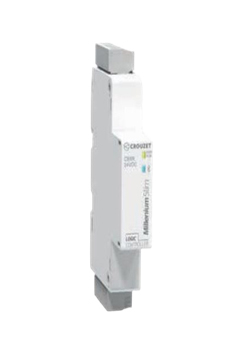
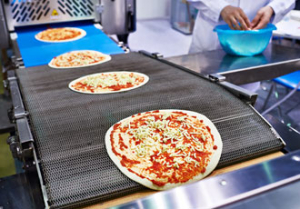
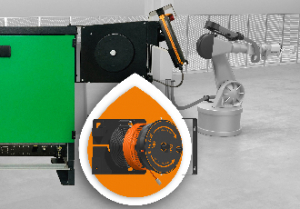
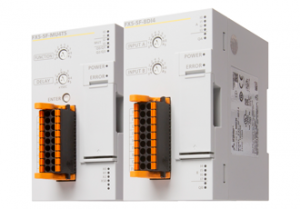







Write a comment
No comments